Newly 2 Michelin starred (2021) restaurant serving innovative food of South American and European influences
Editor’s note: promoted to 2 Michelin stars as of the 2021 Michelin Guide
Da Terra is the latest incarnation for the popular, old Town Hall location of Bethnal Green. Prior to Da Terra taking the reigns, this site was the Typing Room by Lee Westcott and prior to this it was Viajante by Nuno Mendez, all of which I have visited. I’m glad to see the layout has not changed too much as this always was very good. This lunch showed attention to detail from the new head chef Rafael Cagali (from Brazil). The menus are blind with allergies taken in to account and are tasting menus only. Our 5-course meal (the shortest of the three options) showed a skilled handling and design and with a very good moment or two. The total bill was just over £80 per head, with some snacks and complimentary English Sparkling wine at the start of the meal for both as this restaurant falls within the club benefits of the Luxury Restaurant Guide at the time of our table. Even without these benefits, I would say this is very good value for what was had and the head chef is personally ensuring a good experience here. Extremely popular in evenings and booking ahead is strongly recommended.
Da Terra (meaning “from the ground”) is the brainchild collaboration between Rafael Cagali and Paulo Airaudo. The former is head chef and leading the pass at Da Terra and the latter runs Michelin starred Amelia in San Sebastian. The menus at DaTerra are tasting only options, ranging from 5 courses for £65, 8 courses for £98 or 11 courses for £125. Menus change seasonally and all are ‘blind’ i.e., you choose how many you have time and money enough for, allergies and intolerances are noted and then the meal commences.
The meal began with three snacks. Cod croquettes from the underused head and cheeks of cod came with burnt chive mayonnaise which had a very light bread coating and with the chive mayonnaise were delightful. Nori tacos came with trout belly and baeri caviar and were another lovely bite using good quality seaweed (the nori) and luxurious filling. Perhaps the most decadent of all were the potato cannelloni with roe mousse and biancetto (Italian for ‘Whitish’) truffle shavings. Very thin potato cannelloni were oozing with light roe mousse and these were all a strong opening to any meal.
First course was a Stacciatella Tomato Panzanella which is a traditional Italian dish using leftover bread. This modern take had a layer of fried sourdough with soft buratta, spec and preserved datterinis (baby tomatoes), fermented tomatoes and basil oil. A tomato consomme was then poured on top as the finishing touch. This was a wonderfully fresh modern take on Stacciatella; the tomatoes were extremely sweet, the fried sourdough adding a pleasing crunch with well-portioned buratta and a whilst not the most transparent and clear consomme, it held a lovely flavour. A very good opening dish.
Next was a dish simply called, “The Chicken”. This came with onion purée, black winter truffles, chicken skin, chicken yolk and a chicken liver parfait in an eggshell with homemade brioche to have this spooned on to the brioche. This was a very pretty dish in presentation and the chicken liver parfait inside the egg, rich, smooth and with deep liver flavour. The chicken was succulent, well cooked and the chicken feet, egg yolk and onion puree were all a very good match and
Wild halibut was presented having been cooked over a barbeque for 2 minutes with cabbage cooked with beer vinegar to make hispi sauerkraut and also served with monks beard, chicken crumbs and sea vegetables such as sea beet and scurvygrass. This was a good piece of halibut and the supporting roasted garlic and anchovy sauce was fine and something not had with halibut before as a good change. This also came with small parcels made with the skin of the halibut filled with a light roe and these were slightly less seasoned than expected which was another pleasant surprise as roe can be hugely salty and these were grand.
Brazilian Feijoada is a national dish of Brazil and is traditional for Brazilian families on the weekends just as a Sunday roast is in the UK. Feijoada is a stew of beef or pork with black bean and this dish was a modern version with a slow-cooked and very tender piece of New Forest pork belly coated with black bean, orange and fried cavolo nero. The belly of pork was tender with reasonable flavour, the jus made from the pork was fine and the cavolo nero on top was delicate and a very good touch to help cut through the meat and sauce. The orange pieces were necessary owing to the rich and fatty nature of everything else, but simply not a favourite combination that I have experienced. What was an absolute treat was the herb bouquet, served on the side in a little vase of water, tied together with a thin piece of lard which was not only visually pleasing but really was what the mouth needed after the heavy nature of the main dish. An accompanying bowl of Farofa, a form of toasted sweetcorn flour served with bacon, banana and baby teardrop chillies was pleasant to have as a form of Brazilian salad. This is another classic dish of Brazil and good to experience, served in a crafted, wooden bowl and spoon.
Bread was served as a course in its own right and as part of menu. This was homemade sourdough and served with grilled bone marrow with sage, in a similar fashion to that served at La Calandre. Two cultured butters accompanied: salted and pink peppercorn butter. There was also an olive oil from Tuscany, made firm from adding a compound from seaweed that emulsifies the fat within the oil – the latter was probably the most enjoyable of the selection and it was pleasant to be breaking the bread at the table. Next came a cheese course which was goats cheese (Innes Brick) with quince jelly as a classic combination, akin to South American guava paste and fennel flax (linseed) crisps were provided to spread this on. The goats cheese was toned down well and the sweet quince did its job of balancing the cheese very well to the airy goats cheese.
The dessert was sorrel ice cream with blackberries and pistachio with 40 year old Acetaia San Giacomo balsamic vinegar giving sharpness. There was good and bad with this dessert. The thin white chocolate coating to the sorrel was skilful, but it was almost as if all the supporting parts described (the pistachio, the balsamic and blackberries etc) were necessary to help deal with the bitter sorrel ice cream. Herb ice creams I think are risky for desserts and they can be managed by sharp and sweet additions, but there is another way to deal with this, which is to not use herb ice cream. No matter how well made or treated a savoury or biter ice cream is, I simply believe traditionally sweet ice cream is more suitable for dessert.
An array of impressive petit fours finished the meal including lego caipirinha cocktail jellies, wonderfully light and fluffy doughnuts with dulce de lech caramel (this was outstanding), truffles with rosemary and very pretty mini bergamot tartlets with a thin pastry. All of this for £65 on the lower menu and the hard work that has gone into it is not unnoticed and I would say a very worthwhile visit.
There is an imaginative style at De Terra and I’m happy I have now been here. Of the past three restaurants that have held this site, I feel this could be the one to stay and I hope it does, such is the care in the design of the food and the personality and hospitality of the chef being an obviously positive and leading light for the rest of the staff – that is as clear as daylight. I can count on one hand the number of Michelin starred restaurants where the head chef has personally attended to tables (this probably being the most prominent) and this adds to an all-round very good experience. Well done Da Terra and Rafael Cagali.
Food Grade: 82%
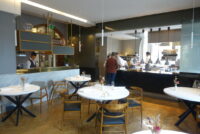
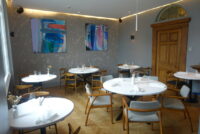
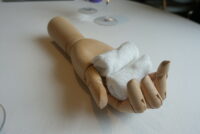
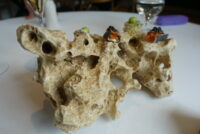

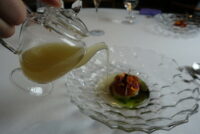
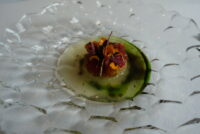

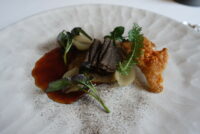
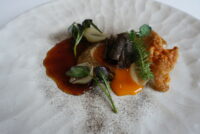
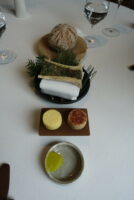
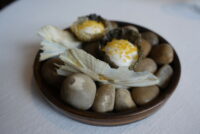
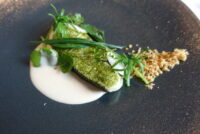

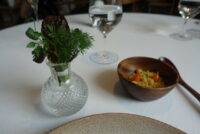
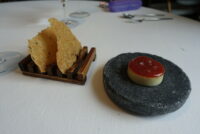
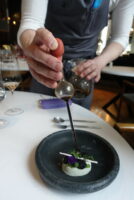
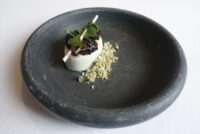
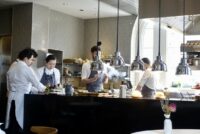
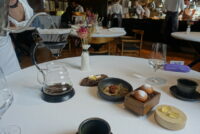
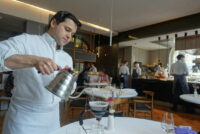
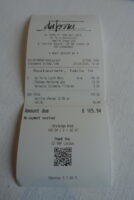
 My hobby-turned-passion began to evolve during my assignments to London where I was fortunate enough to be able to explore all the Michelin starred restaurants in my spare time and as a result, I gradually built up a catalogue of all these venues.
My hobby-turned-passion began to evolve during my assignments to London where I was fortunate enough to be able to explore all the Michelin starred restaurants in my spare time and as a result, I gradually built up a catalogue of all these venues.
Leave a Review of this Restaurant